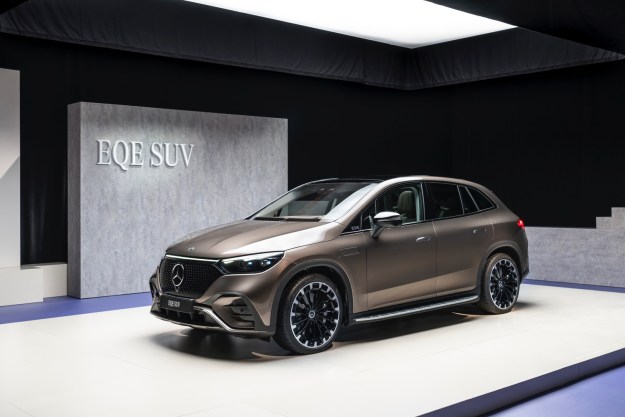The departure of the Mitsubishi Lancer Evolution after the 2015 model year will leave a rally-car sized hole in enthusiasts’ hearts.
Fear not, though, because Mitsubishi has a replacement in mind.
It is, however, an SUV. At the recent Paris Motor Show, company product chief Kanenori Okamoto told Autocar that the Evo “will be replaced in spirit by an SUV with high performance.”
The SUV will reportedly be a hybrid, with technology borrowed from the MiEV electric Pikes Peak racer, including a version of that car’s Super All Wheel Control all-wheel drive system, itself based on the system used in the current Evo.
The concept actually isn’t too surprising given Mitsubishi’s recent emphasis on crossovers and green cars.
While the Galant is gone and the Lancer has been left to rot, Mitsubishi has focused on the Outlander and Outlander Sport utility vehicles, and introduced the tiny the i-MiEV electric car and Mirage hatchback.
Related: Mitsubishi Outlander PHEV Concept-S debuts at 2014 Paris Motor Show
The company already sells a plug-in hybrid version of the Outlander in Europe and Asia, and plans to bring it to the U.S. at some point.
Playing to one’s strengths is always a good idea, but will Mitsubishi be able to pull it off?
Incorporating the performance of the lithe and agile Evo into a bulkier SUV or crossover will be quite a challenge, and the hybrid element will add further complexity.
It’s also unclear what the resulting vehicle would compete with. Hot-rod SUVs like the Porsche Cayenne, Range Rover Sport, and Jeep Grand Cherokee SRT tend to be full-size rigs with big engines and big price tags.
On the other end of the spectrum are smaller models like the MINI Countryman ALL4 John Cooper Works or Nissan Juke NISMO RS, but these are really tall hatchbacks, not SUVs.
So the Mitsubishi hybrid SUV Evo Frankenstein would essentially create a new segment, just like the first Lancer Evolution did.
However, given that no Evo resurrection rumor has panned out so far, we’ll take this one with a grain of salt, even if it would be cool to see a Mitsubishi hybrid kick some dirt in Porsche’s face.
Editors' Recommendations
- Genesis Neolun concept is an electric SUV inspired by tradition
- The Lucid Gravity has more range than any other electric SUV
- Acura’s resurrected ZDX SUV is an EV shortcut
- Mercedes-Maybach EQS SUV is old-school luxury — electrified
- Mercedes-Benz EQE SUV first drive review: ’90s look, cutting-edge tech


